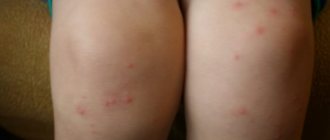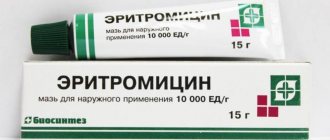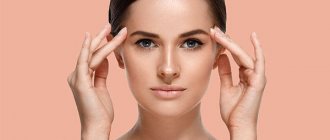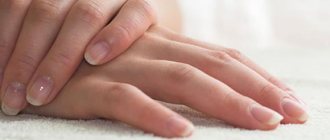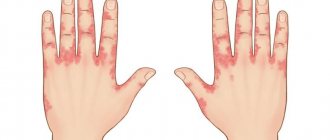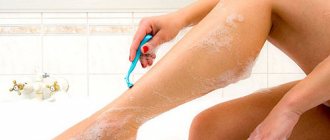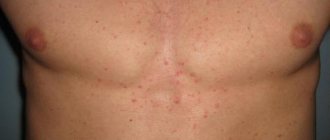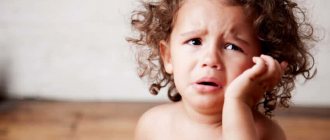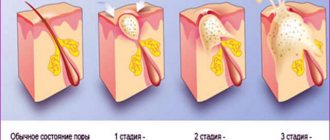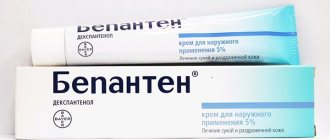Allergic diseases rank first in prevalence. The skin on the hands is especially susceptible to attack by allergens. Every day, hands are exposed to chemicals, as a result of which allergies on the hands manifest themselves in the form of rashes, redness, peeling and dry skin.
The skin on the hands most often comes into contact with harmful substances, becoming dry. A pinpoint rash appears on it in the form of blisters, which itch very much, after which crusts form in the area of scratching.
These manifestations cause the patient, in addition to physical, also aesthetic discomfort. The wrists of the hands, on which the rash is clearly visible, look unkempt, and the appearance resembles infectious diseases.
Causes of allergies
Hand allergies most often occur in patients who are in close contact with household substances. The reason is that many detergents contain chemical elements that have a negative effect on the skin. As a result, severe itching and a rash appears that spreads over the entire surface of the hands.
In some patients, hand allergies may occur at low temperatures. This type of allergy may be accompanied by symptoms of skin redness and pain characteristic of frostbite. Therefore, people with increased sensitivity to cold should keep their hands warm. In addition, it is recommended to use a special protective cream that does not contain water.
Quite often there is increased sensitivity to various medications. In this case, it is recommended to completely exclude the drug from drug therapy or replace it with analogues.
It should be borne in mind that allergies in a child’s hands most often occur at a young age and in most cases children “outgrow” allergies, especially food allergies and to medications. Sometimes complications such as bronchial asthma occur. The reasons for this complication may depend on psychosomatics. In this case, the child needs psychotherapeutic help.
What are hand allergies?
- Those who come into contact with household chemicals a lot have their fingers affected. They become red and may develop a small rash. Severe itching appears, which forces a person to fiercely comb these areas of the skin. The latter becomes thinner, easily damaged, cracks and wounds appear into which dirt can get trapped. It becomes very difficult for a person to perform daily duties: bending the fingers in the joints causes difficulty and pain.
- Allergies on the skin of the hands may be evidence that a person is not eating properly. Artificial additives, preservatives, industrial sugar, synthetic dyes, accumulating in the body, cause its reaction. Most often, children are susceptible to trouble, especially those who are given a lot of store-bought sweets and fast food. The red rash often forms on the inner bends of the elbows, where the skin is very tender. Later, if no measures are taken, toxic substances will accumulate in the body, the situation will worsen - crusts may appear, including weeping, itching, and cracks. It will become very, very difficult to cure all this.
- An allergic reaction is always a malfunction of the body's immune system. One of the manifestations is the problems that some people experience when coming into contact with cold air. In this case, the skin in the area of the hands becomes thin, dry, red, and easily cracks. Its appearance leaves much to be desired. This reaction is especially intensified in severe frost, in dry air, with constant central heating and insufficient humidity in the premises.
- Allergies on the skin of the hands can occur due to insect bites. This is especially true for bees, wasps, and ants, which secrete active components into the wound. This reaction looks like pinpoint red rashes that are very itchy, and swelling may develop.
Separately, it is worth mentioning allergic dermatitis. This is no longer an isolated manifestation, but a disease that is quite difficult to cure.
It can go into a chronic phase, worsen at certain times of the year or during nervous tension. The rashes can look different.
Most often, with constant contact with an allergen, bubbles appear on the hands, they merge into whole groups, burst, and turn into a wet crust. Sometimes, on the contrary, allergic dermatitis is dry - red, pink or whitish scaly thickenings appear.
Symptoms of the disease
Allergies on the hands of each person can manifest themselves in different symptoms, depending on the individual sensitivity of the body. However, the most common manifestations are:
- skin hyperemia, dryness, peeling on the hands;
- severe burning and unbearable itching;
- the skin reaction is expressed in the form of blisters, vesicles, papules and swelling. Subsequently, after opening the bubbles, there may be cracks and wounds on the hands. Wounds in the joints of the fingers are especially painful. Sometimes a complication of limited joint mobility and pain may occur;
- general allergy symptoms are manifested by increased tearing, redness of the eye area, dry cough, which worsens during sleep;
- Nausea, vomiting, and diarrhea may occur;
- an allergic reaction can provoke severe hypotension, fever, and attacks of dizziness.
In addition, rhinitis, frequent sneezing and soreness in the larynx are characteristic of all allergic manifestations.
Features of allergy to cold in children
Recently, cold reactions have often been observed in children. The changed lifestyle was the reason for this. Most of the time they are at home. They go outside less and less. Sports have replaced computer games.
When walking in fresh, cool air, the nose and cheeks become red and itchy. When returning indoors, a rash resembling hives may appear. Symptoms sometimes disappear on their own without additional treatment. In some cases, a night cough accompanied by fever, conjunctivitis and rhinitis is possible.
The home medicine cabinet should contain antihistamine dosage forms, for example, Suprastin or Tavegil, to quickly relieve allergic manifestations. Before going outside, you should treat your skin with baby cream. It's a good idea to use chapstick to protect your lips.
The best protection from the wind would be a modern accessory, a hat-helmet. Mittens should be made of waterproof materials with a cotton backing.
If a child has a reaction to cold, then it is recommended to stop hardening procedures during the period of exacerbation. A decrease in temperature during bathing can cause new attacks of the disease. You should also limit alleyways in cool weather. This will not benefit the child's body.
A medical professional will accurately determine whether a child has an allergy to cold and give the necessary recommendations for treatment.
Treatment
Before starting treatment for hand allergies, it is necessary to consult with specialists, since often the rash can be in the form of another disease. To accurately determine the diagnosis, the doctor prescribes a laboratory examination and, after receiving the results, prescribes adequate treatment.
The most important condition for successful treatment is eliminating the cause that contributes to the development of the allergic reaction. As a rule, identifying an allergen is not difficult, since the first symptom of an allergy is a rash after contact with the substance.
Allergies must be treated with antihistamines, which effectively neutralize acute allergy symptoms, relieving swelling, skin manifestations, etc. Recently, the most frequently prescribed antihistamines are:
- Loratadine;
- Zodak;
- Claritin, etc.
The advantage of their use is the minimal number of side effects and prolonged exposure.
Allergies in the hand area can be treated with special ointments, which can be simple or hormonal. If a negative reaction occurs, ointments with minimal hormone content are used first. If symptoms continue, it is recommended to switch to stronger external agents.
Hormonal ointments are the most effective, but they need to be smeared with a very thin layer, being careful not to get the composition on the mucous membranes. Only a doctor can choose hormonal drugs.
How to eliminate symptoms
Allergies to the extremities are treated according to the same principle as other allergic diseases.
The first priority is to eliminate all contact with the allergen and take the appropriate course of medications.
To eliminate dermatitis and rashes, anti-inflammatory ointments and special ointments for skin allergies are used. In the most difficult cases, hormone therapy is prescribed.
Allergies on the feet go away much faster if you carefully follow daily hygiene procedures: disinfect shoes and wear tights and socks made of high-quality fabrics.
Treatment of allergies with folk remedies
Some patients prefer to avoid medications, preferring traditional medicine.
- The herbs chamomile, tricolor violet, and string have a good antiallergic effect. Based on them, decoctions, compresses are prepared, ointments are made with the addition of a neutral cream that can be smeared without fear of exacerbation of allergies.
- For children, you can make baths from the herb lemon balm, oak bark, elecampane root, and valerian herb.
- An allergic reaction can be easily relieved with aromatherapy with the addition of sandalwood oil, lavender and geranium.
- Allergies can be treated with an infusion of the herb. To do this, you need to brew 4 tablespoons of herbs with 1 liter of boiling water, leaving to infuse for 12 hours. The prepared herbal solution should be taken orally and applied to the itchy area in lotions, changing as it dries.
- In the treatment of an allergic reaction resulting from exposure to detergents. Shilajit helps a lot. To do this you need to take 1 gram. substances, grind and pour 1 liter of boiling water, leaving until the medicine is completely dissolved. The resulting solution is recommended for internal use (100 ml once, before meals). In order to completely cure the disease, it is recommended to take the medicine for 3 weeks.
It must be remembered that traditional treatment using herbs can cause various complications. Therefore, the prescription of traditional medicine should be carried out only after consultation with the attending physician.
It should be borne in mind that prevention can be of great importance in preventing allergies; if followed, you can cope with any problems. As preventive measures, it is recommended to use hardening, follow a hypoallergenic diet, and carry out vitamin therapy.
How to treat?
If the diagnosis is confirmed, treatment is carried out in two directions - symptomatic and preventive. Antihistamines and hormonal or non-hormonal ointments will help reduce allergy symptoms.
For prevention, you can use traditional medicine recipes.
- Fresh beetroot juice in a volume of 100 ml before meals will strengthen the body and cleanse it of toxins.
- During the cool season, fresh celery juice has a good effect for prevention. Daily use of 0.5 teaspoon will help you forget about cold-related ailments.
- It is a good idea to use badger fat as a protective agent. It is rich in vitamins, acids and microelements. It is necessary to rub the ointment on all affected areas of the body. Taken orally with milk in the morning on an empty stomach an hour before meals will help cleanse and strengthen the immune system. Its use should be limited in cases of liver disease.
- Herbal infusions also show good results. Burdock root, tricolor violet and walnut leaves, brewed with water in equal parts, should be taken 60 milliliters 3 times a day. This decoction will cleanse the body of the harmful effects of allergens.
- You can take advantage of the beneficial properties of pine cones. Just 4 pieces, ground into powder and brewed in a water bath, will perfectly relieve itching from affected skin.
For general strengthening of the body, constant hardening should be carried out. A contrast shower and wiping will help achieve visible results.
Symptoms and localization
The location of the rash depends on the type of allergic reaction. Contact dermatitis manifests itself as rashes in the area of influence of the irritant. For example, if the reaction occurs after hand washing, the rash will be located on the hands and palms.
With food allergies, the rashes are localized on the face. The cheeks and area around the lips are usually affected. The rash is accompanied by redness, dryness, and cracks may appear.
Externally, it is difficult to distinguish an allergic rash from dermatological diseases. Even an experienced doctor will need test results to verify the reasons for the deviation. This is explained by the variability of skin manifestations of allergies.
Allergies are indicated by:
- large blisters filled with transparent contents;
- small white bubbles;
- reddish nodules;
- swelling of the skin;
- local redness of the epidermis.
Eczema is also a type of allergic reaction. It manifests itself at the site of contact with the irritant and represents redness and peeling of the epidermis. Ulcers and erosions may appear in places where scratching occurs.
An allergic skin reaction is accompanied by general symptoms - malaise, fever, loss of strength. If large areas of skin or the entire body are affected, consult a doctor. Self-medication is dangerous to health.
Signs of allergy on the feet and its treatment
An allergic rash on the legs is quite common, and its symptoms are very diverse. This may be a slightly noticeable rash on the lower extremities, hyperemic spots in the feet, as well as erosive formations and a crust characteristic of dermatosis.
Allergies on the skin of the feet manifest themselves in different ways: it can be visible immediately after interaction with the allergen, or have a gradual increase in symptoms.
Regardless of where in the legs it occurs and what the period of the inflammatory process is, a person experiences a lot of inconveniences and problems associated with limited mobility.
Most often, allergies interfere with the feet, since it is on this part of the lower extremities that a person has to step first, this process is quite painful, so it is so important to recognize the first symptoms of the disease and take appropriate measures to intercept painful symptoms.
Types of allergic manifestations
All manifestations that occur on the legs due to an allergic reaction can be classified into several types:
- Urticaria is usually caused by an external pathogen and contact with it. As a result, blisters of various sizes appear on the skin, which itch and burst.
- The rash also comes in different sizes and shapes. It is observed when interacting with stimuli of both external and internal properties. Here, provocateurs can be food, clothing or shoes.
- Dermatitis is an inflammatory process on the skin that appears after prolonged exposure to an allergen on the body or when it is too concentrated. Diabetes mellitus and varicose veins are diseases that play a negative role in the development of this disease. You should be wary of any symptoms of allergic dermatitis if you have these serious illnesses.
- Allergy to low temperatures. Often, people may experience a similar reaction to severe frost, in which their legs, especially the hips and ankles, begin to itch. It is temporary and goes away after the body has warmed up.
What is the cause of the disease?
The reason lies in one or another allergen, which irritates the skin, can penetrate deep into the epidermis and become a real disaster for the patient himself and his loved ones, especially for children.
First of all, fungal diseases, as well as disorders associated with the circulatory system, should not be classified as this disease. Although, the symptoms may be similar: there is also redness on the skin and itching.
Among the most common reasons why allergies appear in childhood is intolerance to certain foods. You can often see a rash on your baby's legs after drinking milk.
A similar reaction is most often visible on the legs during the period when complementary feeding begins, when the mother gradually begins to give the child liquid porridge based on cow's milk.
In order for the problem of foot allergy to develop into a persistent diathesis, you should stop giving the product and do special tests, after which it will be possible to adjust the diet. Often mothers dilute whole cow's milk or replace it with goat's milk.
The main allergy-provoking factors are:
- dust contained in carpets, furs, bed linen or in the structures of upholstered furniture. Dust mites are becoming the main causative agents of allergy attacks in adults and children. To prevent such phenomena, you should clean your apartment more often, at least once a week: wet treat all surfaces, wash curtains and carpets, clean soft surfaces of furniture using special products, and also ventilate the room as often as possible;
- Animals very often become the cause of allergic diseases. If an adult develops an allergy to their feet, they should limit contact with pets. A special point should be made about the rules of conduct for women carrying a child. You should be careful not only with pet fur, but also with aquarium fish food, since even such harmless creatures can cause severe attacks. Insect bites also belong to this group;
- chemical materials. Allergies on the feet of an adult can occur due to wearing synthetic materials from which socks, tights, and shoes are made. Material and dyes are potential allergens, since the body’s reaction and its severity depend on production technology, chemicals, and processing of materials;
- plant crops, house plants or fluff from flowering trees and bushes growing outdoors, all these external factors are a potential threat to people suffering from chronic allergies;
- The fungus can cause an allergic rash and peeling on the skin of the feet and toes. In this case, complex treatment is used using antihistamine drugs and antifungal drugs.
Allergy symptoms on feet
It should be noted that the reaction in this type of allergy is immediate, especially in children. Not even three hours have passed since contact with the allergen occurred, and all the signs of the disease are already “visible”. Most often, the lesion is immediately visible on the feet, hips and lower legs.
- Among the most common symptoms are hyperemic satiety, flaking and severe dryness of the legs . Red spots on the legs appear in different forms: dotted, in the form of diffuse foci and protruding above the surface of the skin;
- red spots on the legs are very itchy, can merge and form quite large lesions. They spread to nearby tissues and have various shades, from pinkish to red. This phenomenon can most often be seen on the feet of children;
- Swelling often occurs, especially in the foot area, this is explained by the fact that fluid begins to accumulate under the skin. Swelling does not hurt, but it interferes with movement, especially if it forms between the fingers. As a rule, swelling is localized and is noted only in a certain area;
- itching appears earlier than other signs; it is a warning about the beginning of the process. If you start scratching the itchy parts, the itching begins to intensify; measures should be taken to stop this phenomenon. Children often scratch their legs until they bleed, not realizing that they are thereby provoking its occurrence even more. This is also dangerous because an infectious disease can be provoked through the hands and nails.
Allergies during pregnancy
During pregnancy, a woman's body is rebuilt, many hormonal functions change, hence allergic reactions to familiar and favorite foods are quite natural. This reaction is understandable and natural.
Allergies to the feet and other parts of the legs in a woman carrying a baby most often occur in the second or third trimester, when the skin experiences changes in the form of stretch marks on the legs, abdomen, and back.
At such times, you need to be especially careful not to cause an infection from blisters, rashes or pimples that tend to burst.
Often during the third stage of pregnancy, women suffer from swelling that occurs in the legs. Any change in the color of swelling and its spread throughout the extremities requires specialist intervention and drug therapy.
Allergies are dangerous not only for the expectant mother, but also for her unborn baby. He is able to inherit this disease at birth, so it is important for the mother to maintain a proper diet and good health.
How to treat?
Getting rid of allergies in the lower extremities does not differ from the treatment process for other allergic manifestations. If you do not act on time, the rash can penetrate into the dermis, into deeper structures. Then imperfections in the form of scars may remain on the skin.
A timely visit to a dermatologist or allergist will help stop the painful process and stop inflammation in time. During therapy, antihistamines are prescribed, such as: Suprastin, Claritin, Loratadine. Ointments are also used to treat affected areas.
It is necessary to exclude highly allergenic foods from the diet and switch to a special diet. Among the provocateur products, one can specifically highlight: citrus fruits, chicken eggs, milk, tomatoes and all brightly colored products. During an exacerbation period, porridge with water, vegetables such as cabbage, zucchini, and herbal teas will be preferable.
If the disease is complex, hormonal medications may be prescribed . This method is used exclusively for adults and in cases where traditional antihistamine therapy has not brought positive results over a long period. This method of therapy is contraindicated for treating children with leg allergies.
In case of relapses, you should undergo a full examination and, together with a specialist, consider your future lifestyle:
- Adjust your diet.
- Replace clothes and shoes, eliminating synthetics.
- Avoid contact with animals and other measures.
- Maintain personal hygiene and cleanliness at home.
- Cure fungal diseases, if any.
Getting rid of allergies is possible only with an integrated approach, following all the above tips. It is necessary to increase the protective properties of the body in every possible way. An allergic reaction on the legs may be a consequence of a weakened immune system.
This topic is especially relevant in childhood, when the child is under six years old.
At this time, the little person has not yet formed his own personal immunity, and it is difficult for the fragile body to cope with irritating factors in the form of bacteria and allergens.
For an adult, clean clothes, comfortable natural shoes, environmentally friendly food and a minimum of household chemicals are essential. If all these rules are followed, it becomes possible to protect your body from negative consequences and unwanted intrusions from irritating substances.
Source: https://allergiya03.com/simptomy/allergiya-na-nogah.html
